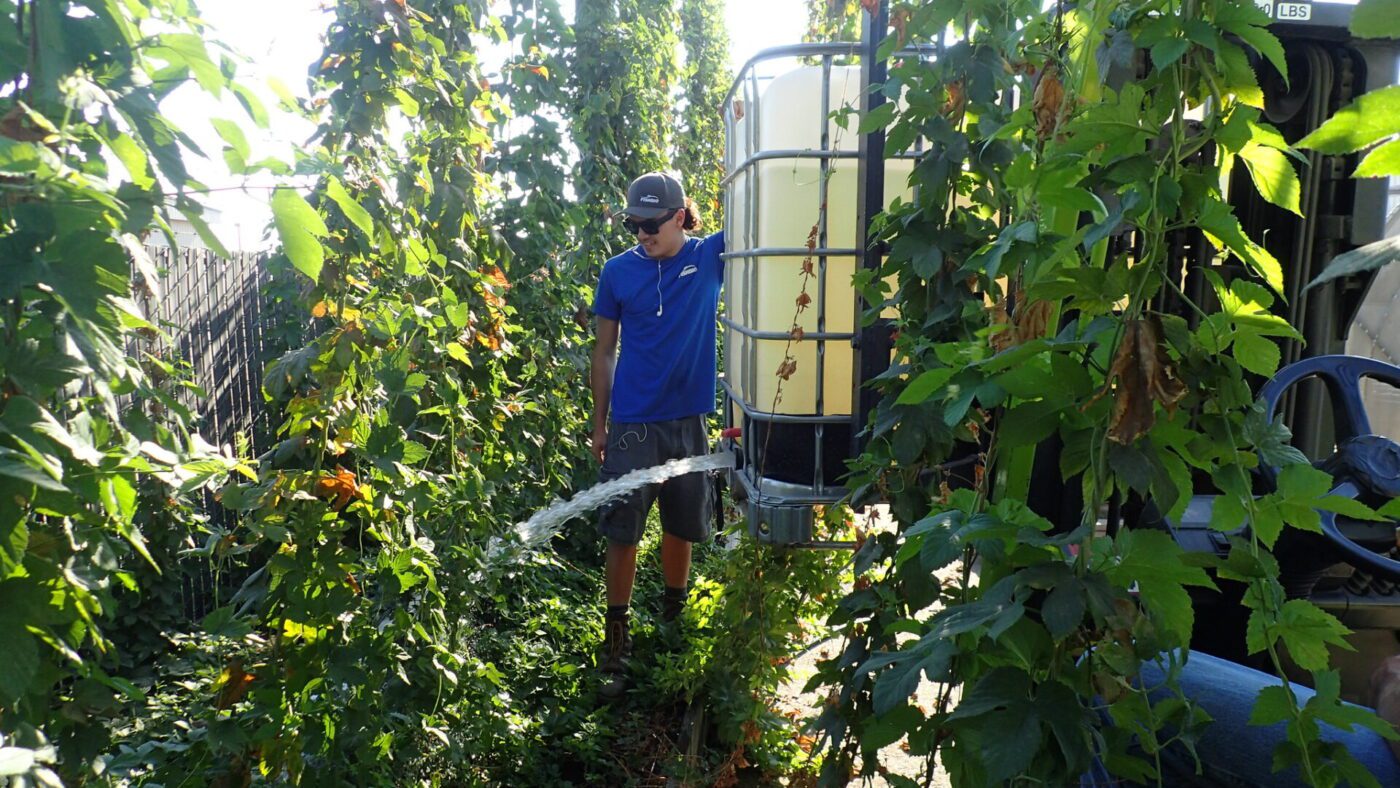Monday November 27, 2023

Imagine California pre-1900 – the wild frontier – a time of prospecting and prosperity where cowboys were commonplace, West Coast salmon canneries were at their peak, and the population was booming. Hiding behind this idyllic façade was the smelly reality that population growth quickly outpaced any planned infrastructure to manage human waste. As early as the late 1800s, cities across California needed creative ways to get rid of sewage. Many coastal communities piped raw sewage straight into the ocean, but this was not feasible for inland communities. By the early 1900s, cities across California adopted the idea of ‘recycling’ sewage, much of which was completely untreated, for urban farm irrigation called “sewer farms”. These farms generated a source of revenue for cities, removed sewage from residences, and helped otherwise arid lands produce crops locally. Wastewater treatment plants replaced sewer farms when residential dissatisfaction with the smell and awareness of health concerns regarding contact with raw sewage increased, leading to the development of guidelines and restrictions regarding sewage management.

Wastewater treatment facilities in California consist of 100,000 miles of sewage lines, piping sewage from businesses and an estimated 90% of homes to plants that treat nearly 4 billion gallons of wastewater a day. That’s enough water to fill California’s largest reservoir – Shasta Lake – over the course of a year! There are three main types of sewer systems used in the United States. Sanitary sewers carry black- (used water contaminated with chemicals or excrement) and greywater (used water without toxic chemicals or excrement) from residences and businesses to treatment plants. Stormwater sewer systems move runoff straight to nearby waterways to prevent urban flooding. Combined sewer systems carry both sanitary sewer water and stormwater to treatment plants. They are increasingly uncommon as large storm events can overwhelm these systems and cause raw sewage spills into surrounding areas which threaten human health and can cause fish kills. These spills trigger algal blooms that use the available oxygen and suffocate fish. The spills also introduce lethal concentrations of sediment and suspended solids into surrounding waters, exposing fish to microbes that may cause infection and disease.

Threadfin shad (Dorosoma petenense) captured in a wastewater treatment pond.
Threats to human and fish health prompted the improvement of wastewater treatment practices. Preliminary treatment mainly consists of physical processes to remove large solids (like rocks, toys, and trash) and solid waste (like coffee grounds, eggshells, and feces). Secondary treatment utilizes microorganisms to consume and break down most of the remaining solids and organic materials in the water. During this treatment the water is then disinfected, typically through chlorination, to kill harmful microbes. Finally, tertiary treatment further filters non-biodegradable contaminants (including phosphorus and nitrogen) from secondary treatment outflow. Organic solids can be retained from the treatment procedure and processed to become fertilizer or fuel! While wastewater treatment plants provide a fundamental service for California, some contaminants of emerging concern such as pharmaceuticals, hormones, and microplastics are difficult to remove and may remain despite treatment, negatively impacting fish health downstream.

FISHBIO staff using recycled wastewater from our Fish Lab to water the garden.
Recycled water is used for a myriad of applications including landscape and agricultural irrigation (accounting for almost half of recycled water use in 2015), groundwater recharge, and ecological purposes. As urbanization expands and climate change continues to alter natural flow regimes, wastewater treatment effluent is becoming a larger proportion of flows in the urban-aquatic interface. Wastewater treatment effluent can be crucial to maintaining base flows in water-stressed regions like much of California. In cases where drying of historically perennial streams occurs, this effluent can serve as a refuge habitat for fish during times of severe drought. There are, however, downsides to the addition of effluent to aquatic ecosystems.

Excess algae growth – or eutrophication – caused by excessive nutrient input.
Often, effluent (especially when it does not receive tertiary treatment) contains an excess of nutrients which can lead to eutrophication and harmful algal blooms in downstream freshwater and marine systems. It is also linked to changes in fish behavior and may serve as an ecological trap, attracting fish to more productive environments and warmer temperatures (in winter) while exposing them to a slew of potentially harmful contaminants. Additionally, wastewater treatment effluent impacts fish physiology and can cause organ damage. However, these trends are influenced by the extent to which wastewater is treated prior to exposure. Fish exposed to upgraded (tertiary treated) wastewater effluent had improved health outcomes compared to fish exposed to water filtered at the secondary level. Wastewater treatment practices have advanced leaps and bounds in the last century, providing several new approaches to mitigate the effects of raw sewage on local communities and the environment but many of these upgrades are costly. As urban areas expand and population growth continues, it is important to consider the effects of effluent on native fish health when considering wastewater treatment system upgrades.
Header Image: East Bay Municipal Utility District Wastewater Treatment Plant. Photo by Thomas Hawk. CC BY 2.0.
This post was featured in our weekly e-newsletter, the Fish Report. You can subscribe to the Fish Report here.
